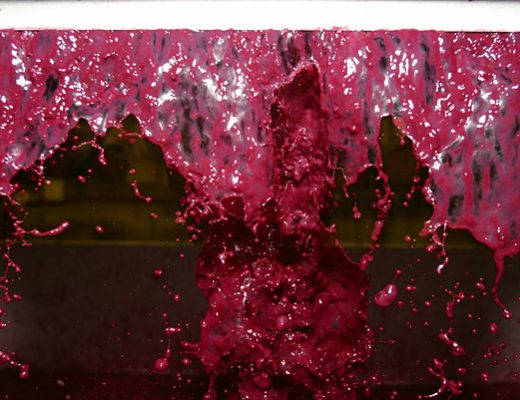One drop of rotundone is enough to make an Olympic size swimming pool smell peppery. One gram of this potent stuff could make the entire Australian Shiraz harvest smell peppery too. This compound was identified last year and was one of the more technical topics tackled at Hawke’s Bay’s Syrah symposium.
While there were a few tedious talks due to the bumbling nature of several speakers, it was an interesting day.
Tastings from around the world proved a point that New Zealand Syrah is pretty distinctive and can be picked from a line up of the rest of the world’s other Syrah producers. The Northern Rhone has its own unmistakeable style while South Africa can generally be picked for its burnt rubber/Stilton/gamey/call it what you will savoury notes. But New Zealand has its own New World version of the Rhone. It’s an elegant riper style with black pepper and ripe brambles, dusty firm tannins and a lovely freshness.
British speaker Tim Atkin MW published an article back in 2007 claiming ‘Syrah could save the day in Hawkes Bay’. He encouraged more planting of the variety three years ago but the call clearly fell on deaf ears as a mere 10 hectares have been planted across New Zealand since then! He stood up yesterday and told them the same story – to take Syrah more seriously.
If Sauvignon Blanc, which makes up more than 80% of New Zealand wine exports falls out of fashion in the same way that Australian Chardonnay did, New Zealand needs a plan B. Yes, it has other varieties planted but they’re a bit of a sideshow at the moment. New Zealand really has an opportunity to take the world by storm with Syrah. It could be as successful as its Pinot Noir. Let’s hope someone’s listening this time.
On another note, while I love some Australian Shirazes, there’s clearly a problem of over-acidifying. In a line-up of the top Shirazes in the country, the line-up was marred by sourness on the finish that I can only explain as overzealous acid additions. Think sucking on a lemon. Paringa Estate, Shaw & Smith and to some extent Clonakilla displayed this and they really need to rethink it.
The wines are clearly top quality with great concentration and texture but this sourness is not acceptable. Many New Zealand winemakers came up and agreed with me after I’d stuck my neck out at the seminar but I think it got some Australian backs up. What’s wrong with honesty?
Well it seems, honesty is a bad thing. I didn’t realize that this was a particularly sensitive issue in Australia at the moment after fellow English wine journo Andrew Jefford made a speech at the National Wine Centre in Adelaide in November about this and other things (click here to see the speech in full) He said “Misjudged acid addition is, for me, the defining fault of the Australian wine industry, and I regret the fact that it is rarely if ever viewed as a fault here. I’ve tasted hundreds of wines since my arrival here which I truly feel are defaced by acidity. Potentially fine wines which would, in other words, have been much, much better with much softer, less assertive levels of acidity. Lower acid levels would lead to flavour profiles of greater delicacy, expressivity and finesse, and a much subtler sensual appeal. One of the most frequent criticisms of Australian wine from both consumers and the international press is of homogeneity, and no single factor tends to reinforce this sense of sameiness more than acid adjustment as it’s currently practiced here.â€
Guess I’m not alone.

